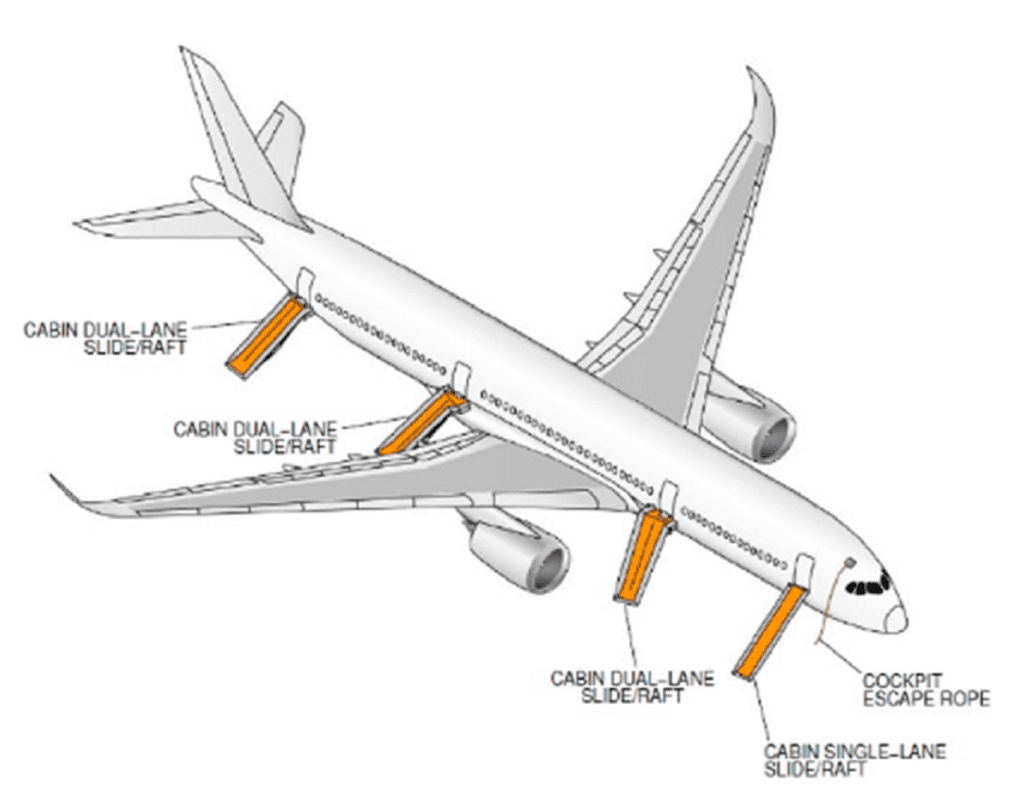
The New Year period is usually characterized by festivities and increased air travel. However, on 2 January, the mood of 367 passengers and 12 crew members was spoiled when the Japan Airlines aircraft they were traveling on was involved in a runway collision at Haneda Airport. This article highlights some of the commendable actions taken by the crew and the factors surrounding the successful evacuation of all on board the Airbus A350 aircraft.

The accident involved a runway collision between an Airbus 350 operated by Japan Airlines and a De Havilland Canada Dash 8 aircraft operated by the Japan Coast Guard. Although five out of six crew on the Japan Coast Guard aircraft lost their lives, everyone aboard the Japan Airlines aircraft survived, highlighting the commendable evacuation job taken by the crew since the aircraft was on fire following the collision.

The Flight JAL516 crew took measures to evacuate everyone using the three evacuation slides that were furthest from the fire that ignited upon collision. The cabin crew received a commendation for the prompt evacuation of the passengers aboard Flight JAL516, with the entire evacuation process taking 90 minutes. Additionally, the Fire Department was prompt to respond and succeeded in putting out the fire within a few hours.
The measures taken by the crew and the Fire Department highlight some measures usually taken to ensure quick exit in case of an aircraft accident. For cabin crew to manage successful evacuations at such a high speed, they are usually trained to handle different accident scenarios. Therefore, although it is highly unlikely, in case you are in an aircraft accident, follow all instructions given by the cabin crew because they are highly trained to deal with such situations.
Design features of the A350 involved in the accident also contributed to the successful evacuation of everyone on board the aircraft. The Airbus A350 is among the first aircraft types manufactured using composite carbon fiber materials. Therefore, the aircraft managed to withstand the impact of the collision and offered the cabin crew enough time to evacuate the passengers. Moreover, the A350 has eight evacuation slides, and despite the fire, the crew managed to use three of them to speed up the evacuation process.
Given the different fates that met the A350 operated by Japan Airlines and the DHC-8 operated by the Japan Coast Guard, one might be tempted to think that the A350 is a better aircraft. However, the only difference is the age of the aircraft. Airbus confirmed that the aircraft involved in the accident had been delivered to Japan Airlines on 10 November 2021 while the Japan Coast Guard had operated the aircraft for over fifteen years. Therefore, the A350 had more modern technology and allowed enough time for evacuation, although it was also burnt to the ground.


The main thing to remember is that irrespective of the type of aircraft, in case an accident occurs, follow the instructions given by the cabin crew for safe and quick evacuation.






